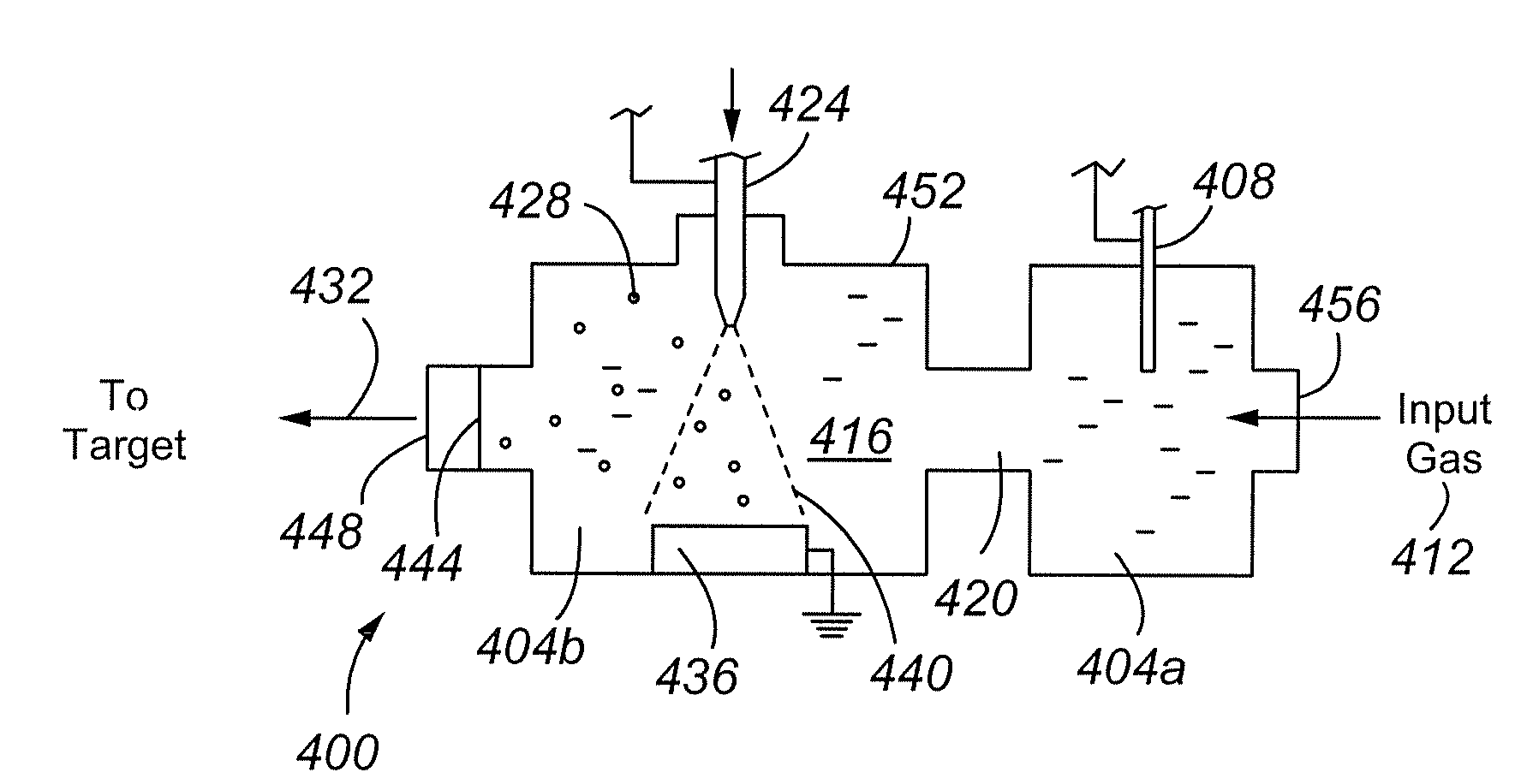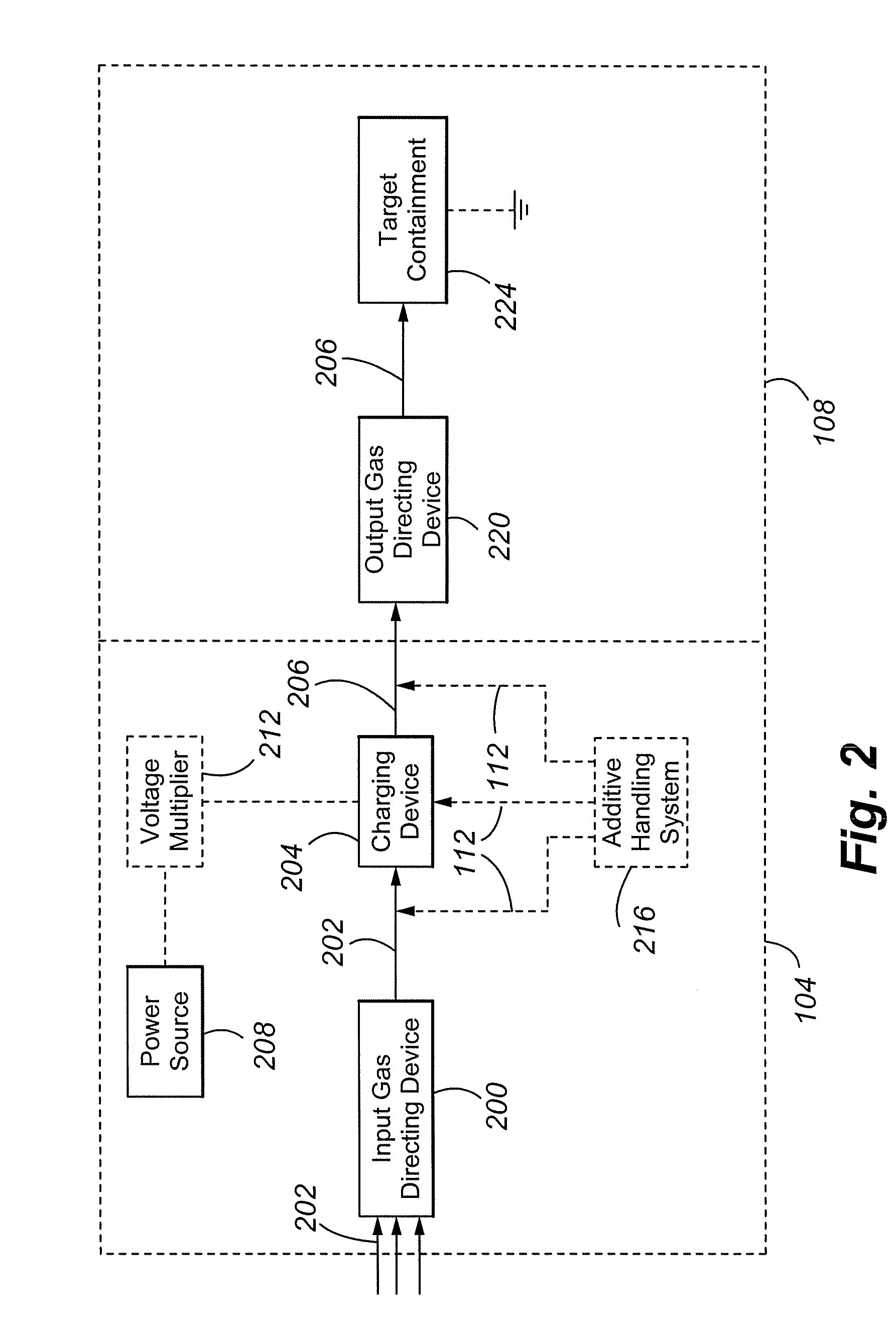Electrotherapeutic treatment device and method
- Summary
- Abstract
- Description
- Claims
- Application Information
AI Technical Summary
Benefits of technology
Problems solved by technology
Method used
Image
Examples
Embodiment Construction
Overview of Electrotherapeutic Treatment System
[0043]FIG. 1 depicts an electrotherapeutic treatment system 100 according to a first embodiment of the present invention. The system 100 includes a charged particle generation system 104, charged particle delivery system 108, an additive (optional) 112, a humidity source (optional) 116, a detection device (optional) 120, a control module (optional) 124, and a user interface (optional) 128. The system 100 provides a gas stream containing charged particles, preferably at the atomic, molecular, and / or macromolecular (e.g., aerosol) scales, to a target 132. Typically, the maximum size of the charged particle is less than 3 microns.
[0044]The system 100 applies controlled quantities of electric charge, of a selected polarity and using an airborne transport mechanism, to target specific cells or tissues of the target organism. Charged particles can include ionized molecules and / or charged droplets, typically of more complex molecules. For most...
PUM
 Login to View More
Login to View More Abstract
Description
Claims
Application Information
 Login to View More
Login to View More - R&D
- Intellectual Property
- Life Sciences
- Materials
- Tech Scout
- Unparalleled Data Quality
- Higher Quality Content
- 60% Fewer Hallucinations
Browse by: Latest US Patents, China's latest patents, Technical Efficacy Thesaurus, Application Domain, Technology Topic, Popular Technical Reports.
© 2025 PatSnap. All rights reserved.Legal|Privacy policy|Modern Slavery Act Transparency Statement|Sitemap|About US| Contact US: help@patsnap.com



